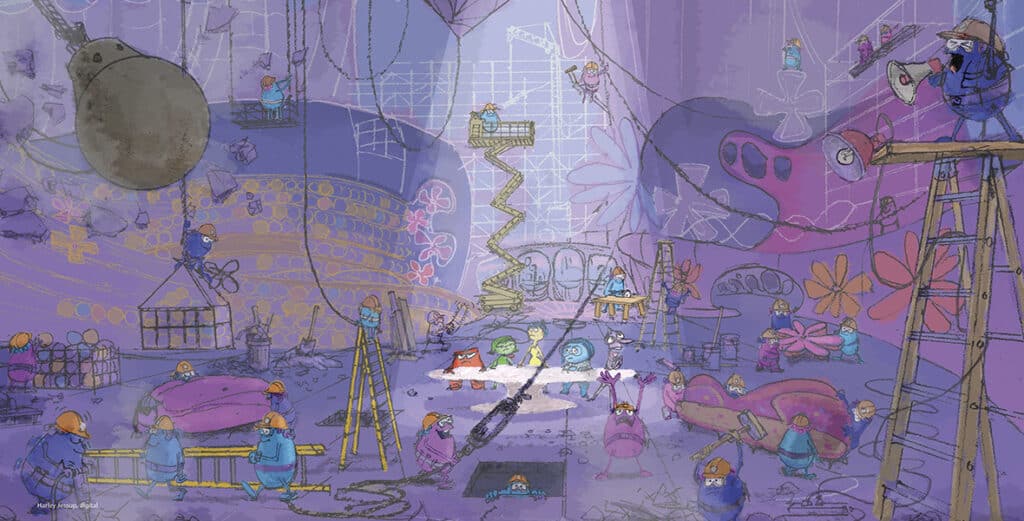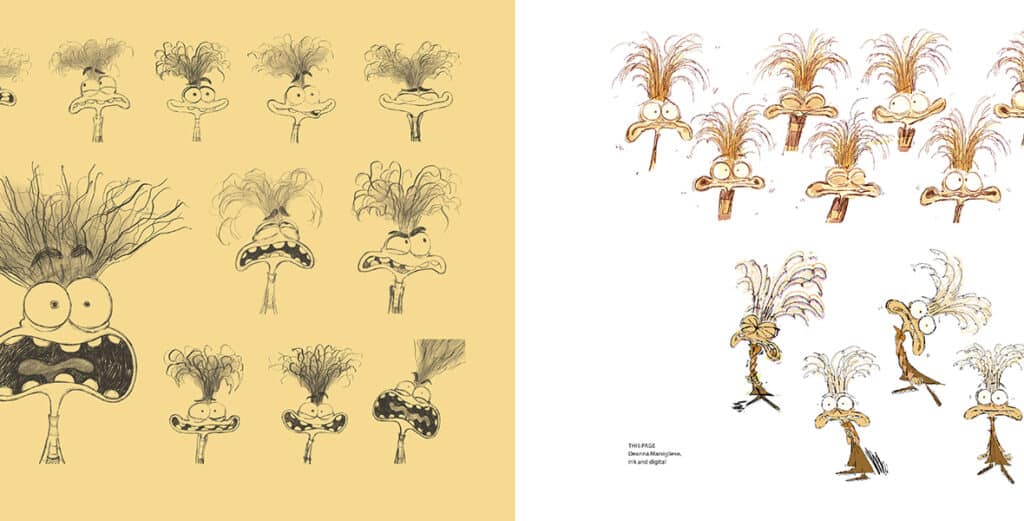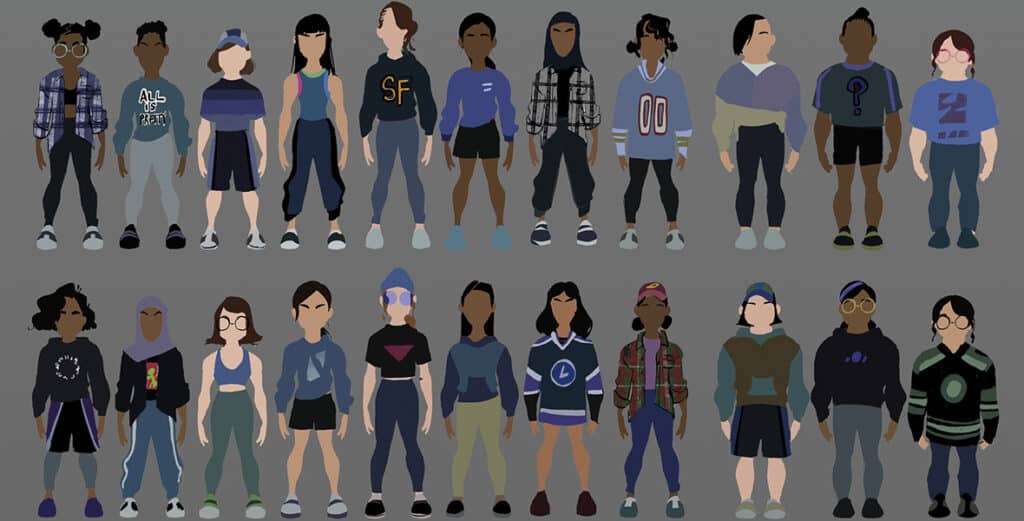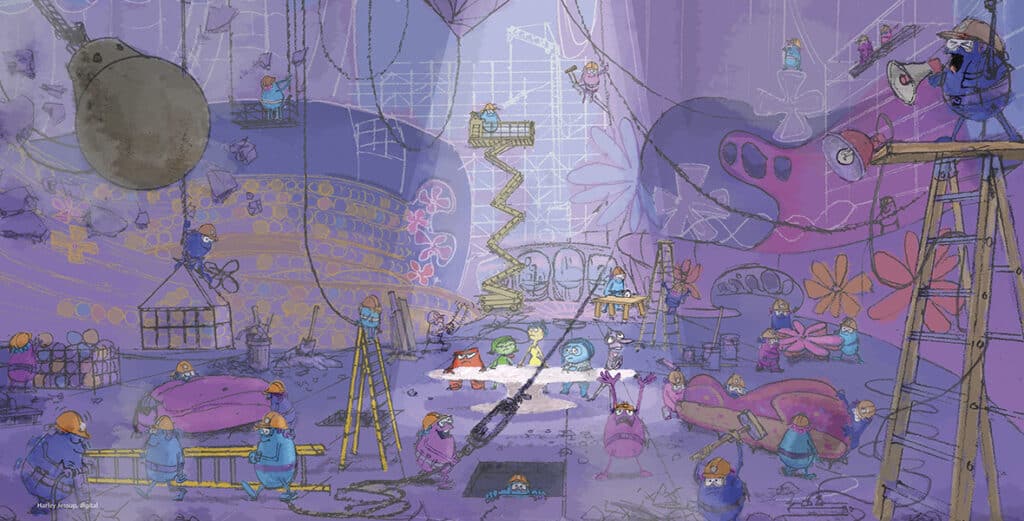
Disney/Pixar The Art of Inside Out 2
Inside Out 2 has us feeling all kinds of emotions: Excitement, anticipation, joy… The sequel to Pixar’s Oscar®-winning Inside Out is heading to theaters June 14, but fans can get an early sneak peek thanks to an all-new book! The Art of Inside Out 2, showcasing the art and behind-the-scenes details of the film, is available for preorder now. Feeling impatient? Get a first look at the book below, and hear from production designer Jason Deamer on the creative process behind making Inside Out 2.

D23: As we know, the second film follows now-teenage Riley as she navigates new Emotions such as Anxiety, Ennui, Embarrassment, and Envy. What was your creative process for bringing these new characters to life?
Jason Deamer (JD): When it came to choosing the new emotions, it was an embarrassment of riches (pun intended!). I think you’d be surprised by how many new characters came and went as the story developed. Over time, we realized that we needed to lean towards the emotions that made sense for where Riley was in the story. Once we focused on what made sense for a 13-year-old, it all started to become clear. When we started asking ourselves which Emotions have the biggest influence at that age, that’s when we finally narrowed down the options and settled on our new characters: Ennui, Envy, Embarrassment, and leading the way, Anxiety.

D23: The Art of Inside Out 2 also talks about the new characters Riley will meet in the real world. What was your creative process for bringing these specific characters to life, as well?
JD: The crew talked at length about wanting to design characters from a place that was representative of the world we live in. For Riley’s story, that’s San Francisco. Our Character Art Director, Keiko Murayama, did a deep dive into researching the demographics and cultural history of the people that make San Francisco the city it is, so we could design the human cast from an informed and intentional place.
Even for secondary characters—by which I mean those with less screen time where there might not be room to communicate a backstory to the audience—this still proved very useful when it came to our design choices. To give some examples: “What is a plausible garment for this character? How would this person cut their hair?”, etc. In my mind, even though it may not be overtly clear to a viewer, this type of specific and observational detail in character designs adds a rich texture to the cinematic experience.
D23: As we know, navigating our teens can feel uncertain and overwhelming at times —did you tap into your personal experiences as you were working on Inside Out 2?
JD: I think for most of us, the changes we go through as a teenager come with more than a few bumps in the road. And telling a story in the context of this very human experience came with a silver lining. It opens a lot of doors for humor. Personally, I have clear memories of being self-conscious at a party and not knowing what to do with my hands; growing so quickly that I tripped over stairs in my own house; my friend group taking up more of my mind’s attention than my family; or even idolizing older kids almost to the point of hero worship… To me, that’s what makes all this stuff so relatable.

D23: With the great success of the first film, what were the biggest pressures/challenges you had to face when coming up with the production design, Emotions art, and creative worlds in IO2?
JD: I jumped at the opportunity to take this task on. I loved what my dearly departed friend and mentor Ralph Eggleston did as the production designer of Inside Out. Revisiting all the soft and semi-translucent materials of the mind world presented so many possibilities. When you’re designing for the “mind,” you can do just about anything. Certainly there was pressure there—Inside Out is beloved, so it was imperative that we honor the way it was designed, as well as work within the rules of the world building established to audiences in the original story. Beyond that, though, the mind is your oyster.
On another note, there’s a funny thing that happens when you make a follow-up to such a beloved film. You actually convince yourself, somehow, that it will be easier. We know what the world should look like, after all; plus, we assume we’ll get some reuse out of the characters and set pieces. But the truth is, we started making Inside Out 14 years ago! All of the software has fundamentally changed since then. So on this film, we were starting all of our work from scratch.
Another part of this is how surprisingly easy it is to let yourself ignore that most of the places your mind will go creatively, as you explore new concepts, will end up being the same or very similar to the ideas that came up making the first film. Of course you would, if you think about it. That’s the stuff which makes sense for this world, and is charming or funny, and worked in the original story. As a consequence, you have to push yourself in order to find novel concepts that expand on the world to create an engaging experience for the audience.



